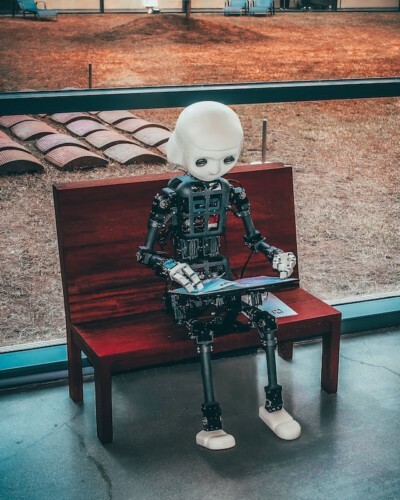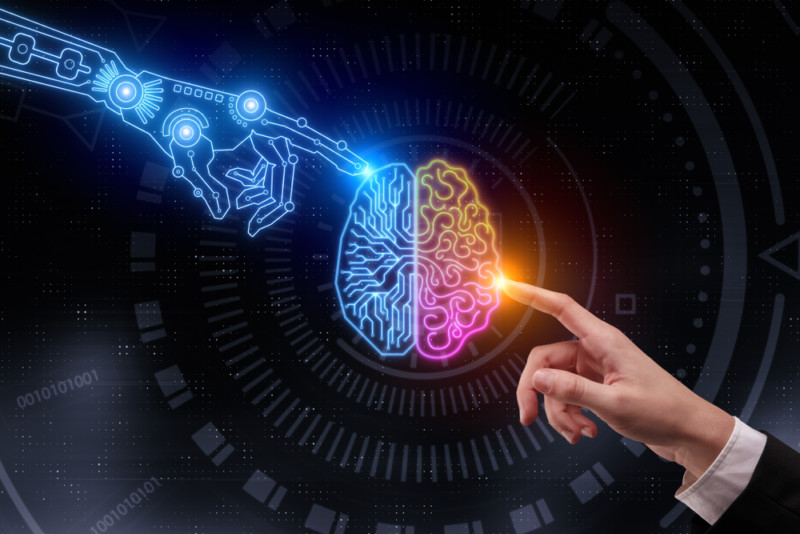Just two years ago, OpenAI launched the beta version of its GPT-3 language generator, the biggest leap towards generating human-like AI content. However, developers soon found that it doesn’t pass the Turing test, implying that technology has many more miles to go to before it can imitate human intelligence. On the other hand, Turing himself depended on his 1951 digital computer to create music. So, who creates content better – AI or humans?
 Image Source: Unsplash
Image Source: Unsplash
AI Relies on Existing Data to Create Content
AI is still in its nascent stages. At present, uses existing data, such as user preferences and behavior, to generate content. It can also scour huge datasets to bring you the information deemed most relevant for your target audience. That can be a big advantage over human content creation, which would take significant time and effort to cull useful information from the infobesity online. On the other hand, they say machine learning is only as good as the algorithms it is based on. So, while it can be trained to wade through structured and unstructured data to extract meaningful insights, it cannot actually create something new.
AI Isn’t Creative
An AI tool can’t think creatively on its own and relies on human input for that. For instance, an AI-generated article on how to build a machine from scratch may explain which components should go where and how they function very effectively. However, the tool, by itself, cannot come up with an original idea or even an opinion. It could also be difficult for an algorithm to write anything entertaining or funny because humor can’t be coded through programming languages.
But humans are naturally creative, which helps them create unique content. We can better understand what clicks with the target audience. Therefore, humans can create connections even between apparently unrelated things. Machines cannot do this by themselves.
AI Can’t Create Personal Connections
Building relationships is crucial for businesses. We can understand the sentiment, context and tone of content by reading between the lines. This makes us more empathetic and therefore approachable. Besides offering better insight into the human experience or condition, we can even understand nuances of language. AI is still lagging human beings in this area. The content it generates cannot build an emotional connection with the audience.
But AI is Useful for Research and Analysis
The biggest use of AI is in customer profiling, market-based research and analysis. For instance, you want to find out which customers have the highest likelihood of buying your services/products. You can then target them by creating suitable marketing or advertising content based on AI-generated data insights.
AI tools can also help determine customer interests and preferences to help you plan future campaigns more effectively. This kind of data particularly helps provide insight into why consumers prefer certain products/services to others.
Who Should Create Content?
Considering the strengths and weaknesses of AI and humans, we are not quite ready to hand over the reins to technology completely. It still needs to be a collaboration to generate quality content and determine the best marketing strategies.
 Image Source: Visvero
Image Source: Visvero
Say, you have a particular audience for your brand: Gen Z or millennials. AI can gather information about your audience to help you create content exclusively targeted to the group. Then you’ll need humans well-trained in writing and editing to create original content from scratch using the received information.
Today, several artists work together with machines to come up with new genres of music. Likewise, content creators can work together with AI for brilliant results. A fascinating area where this can already be witnessed is science fiction in writing. Chen Qiufan’s “The State of Trance”, a sci-fi short story with AI-generated passages, won a Shanghai literary competition against works of contenders like Nobel Prize winner Mo Yan.


Leave A Comment
You must be logged in to post a comment.